Agronomy: There’s an App for That – Predicting Soybean Replant
It seems these days there is an app for about anything you can think of. Generally, in the agriculture world I have a hard time finding apps that are actually useful. There are a few for weather, but other than that I do not use too many apps and my phone is usually for communication purposes. However, I have been made aware of a new app with a real purpose that is available. The Bean Cam app for either iPhone or Android is free and lets you use the camera on your phone to check bean stands. It will allow [...]
Agronomy: Meet Your Soy CCA Envoys
There are six soybean experts who are part of the Soy CCA Envoy program, each specializing in a different area of soybean management. Read their bios below. Lance Tarochione is a technical agronomist with Asgrow/DEKALB in west central Illinois. His work has focused on crop production, research and product development, and through his role at Monsanto® he currently supports the Asgrow® and DEKALB® brands in seven counties in western Illinois. Mike Wilson is a Specialty Products Marketing Coordinator at Wabash Valley Service Company. For over 20 years he has been working with farmers in ten counties in southeastern Illinois to [...]
Insect Management: Watch For Bean Leaf Beetles
One of the first insects to feed on soybeans is the bean leaf beetle and now is the time to be on the lookout. Bean leaf beetles overwinter as adults and emerge to give rise to 1st and 2nd generations of adults. Below is the life cycle of the bean leaf beetle. Source: Pioneer Source: Purdue University Early planted soybeans, and especially the first fields to emerge in an area, may exhibit seedling injury due to feeding by overwintering adults as they emerge from the soil in the spring. If seedling injury and early defoliation are severe, and stand loss [...]
Insect Management: Scout Early, Scout Often
Soybean planting was a slow process due to the fluctuating temperatures and excessive moisture in many areas. A month ago, while scouting and assessing wheat for stripe rust, I found mature green stink bugs and red-legged grasshoppers. The irony of the situation was that these are generally considered late-season insects. This means that they survived our rather mild winter. Above: Green Stinkbug Many pests and threats have arrived early this year. A good example is the early germination of waterhemp. I can only assume that insects are going to be an early problem as well. My weeds professor in college, [...]
Agronomy: Illinois Council on Best Management Practices – Summer Newsletter
FARMERS IMPROVED WATERSHED HEALTH, STUDY SHOWS A long-running experiment to improve water quality in and around Livingston County has yielded encouraging results. New analysis of water samples collected from the Indian Creek Watershed indicates best management practices are reducing nutrient runoff during storm events. Read more here. MCCORMICK SHARES HIS STRATEGIES Jack McCormick uses a wide variety of practices to manage nutrients on his Randolph County farm. Now McCormick's story is shared, along with many others, on the Conservation Story Map. Released in March, the Conservation Story Map has become a central resource to learn the best management practices used [...]
Plant and Soil Health: Let Cover Crops Hang Around A Bit Longer
Extending cover crop growth until planting soybeans enhances the benefit. Cover crops are popular for a variety of reasons including protecting the soil, suppressing weeds, scavenging nutrients and stimulating a robust microbial system that improves soil health. There are a variety of species that can be planted into standing corn or seeded into cornstalks, in the summer after wheat harvest or in the early fall. Generally, you would plant a combination of species—some that winter kills and others that overwinter and continue to grow through the spring. Spring cover growth is important, as it adds more biomass to the soil [...]
Soil Health – A Renewal
Today we read articles and hear talks about the importance of soil health and learning to pay more attention to it, and adopting practices that improve and sustain it. Soil health is a term appearing in many articles, presentations and product advertisements. The NRCS defines the term as “… the capacity of a soil to function as a vital living ecosystem that sustains plants, animals, and humans.” That definition is predicated on a strategy using four “core” principles: providing continuous living roots, minimizing soil disturbance, maximizing biodiversity and maximizing soil cover. Minimizing soil disturbance and maximizing soil cover are principles [...]
Agronomy: To replant or not replant, that is the question.
As I sit here in my office I can hear the patter of raindrops outside the window. It is late May and we are still trying to get corn and soybeans planted down here. Now we will have at least another day’s delay as this little shower has to dry up. This isn’t the first time I’ve dealt with this kind of weather and I am sure it won’t be the last. It does, however, come with its own set of problems to deal with. What few soybeans we do have planted have gone through a gamut of problems: cold [...]

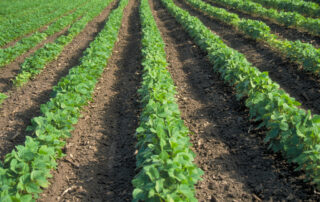
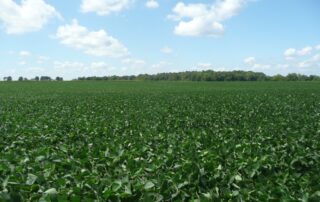
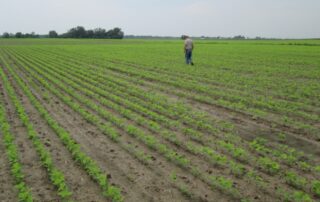
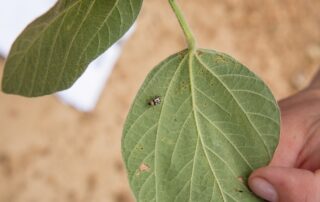
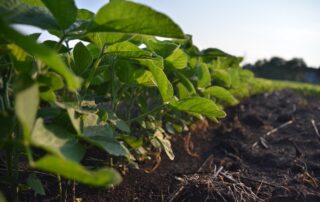
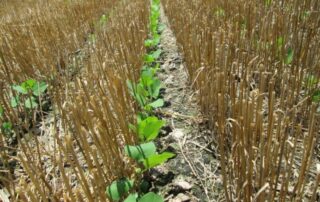
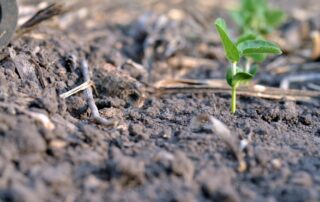
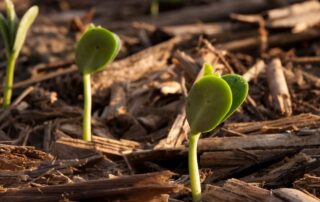

 and then
and then